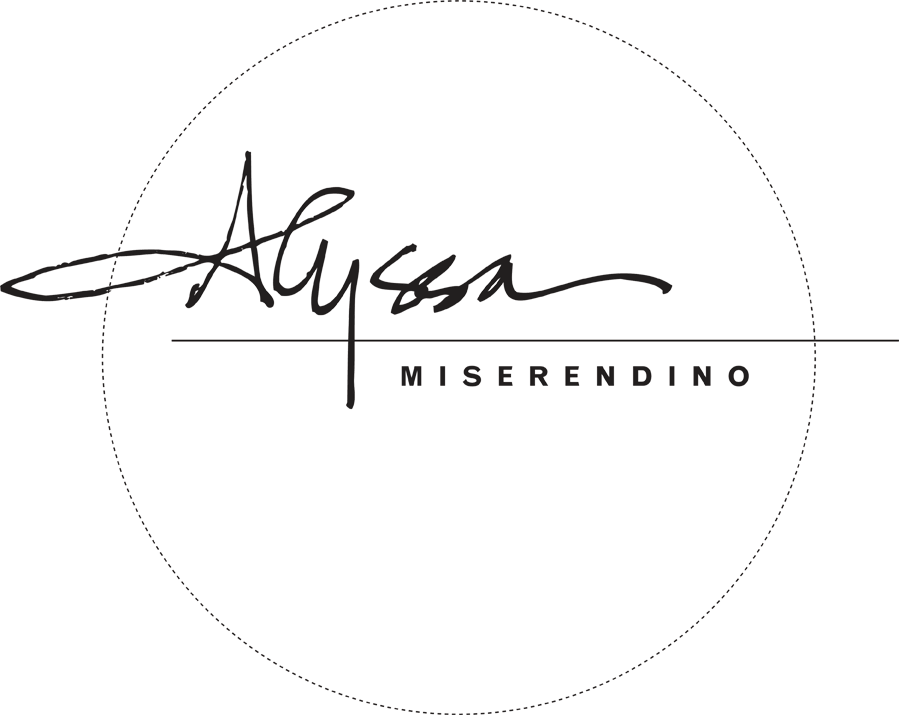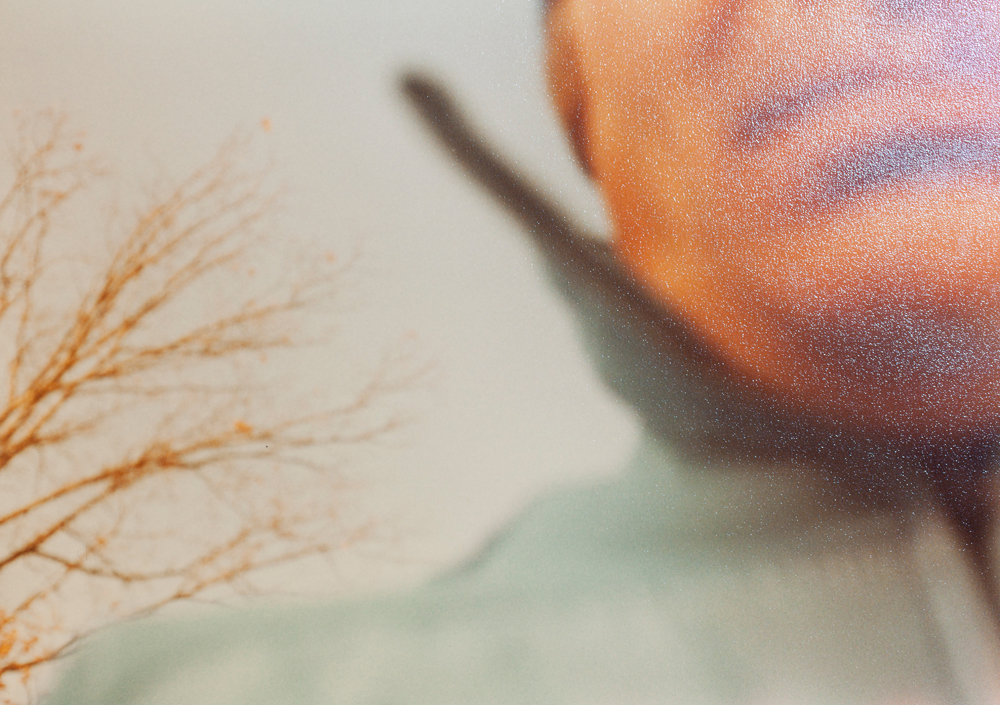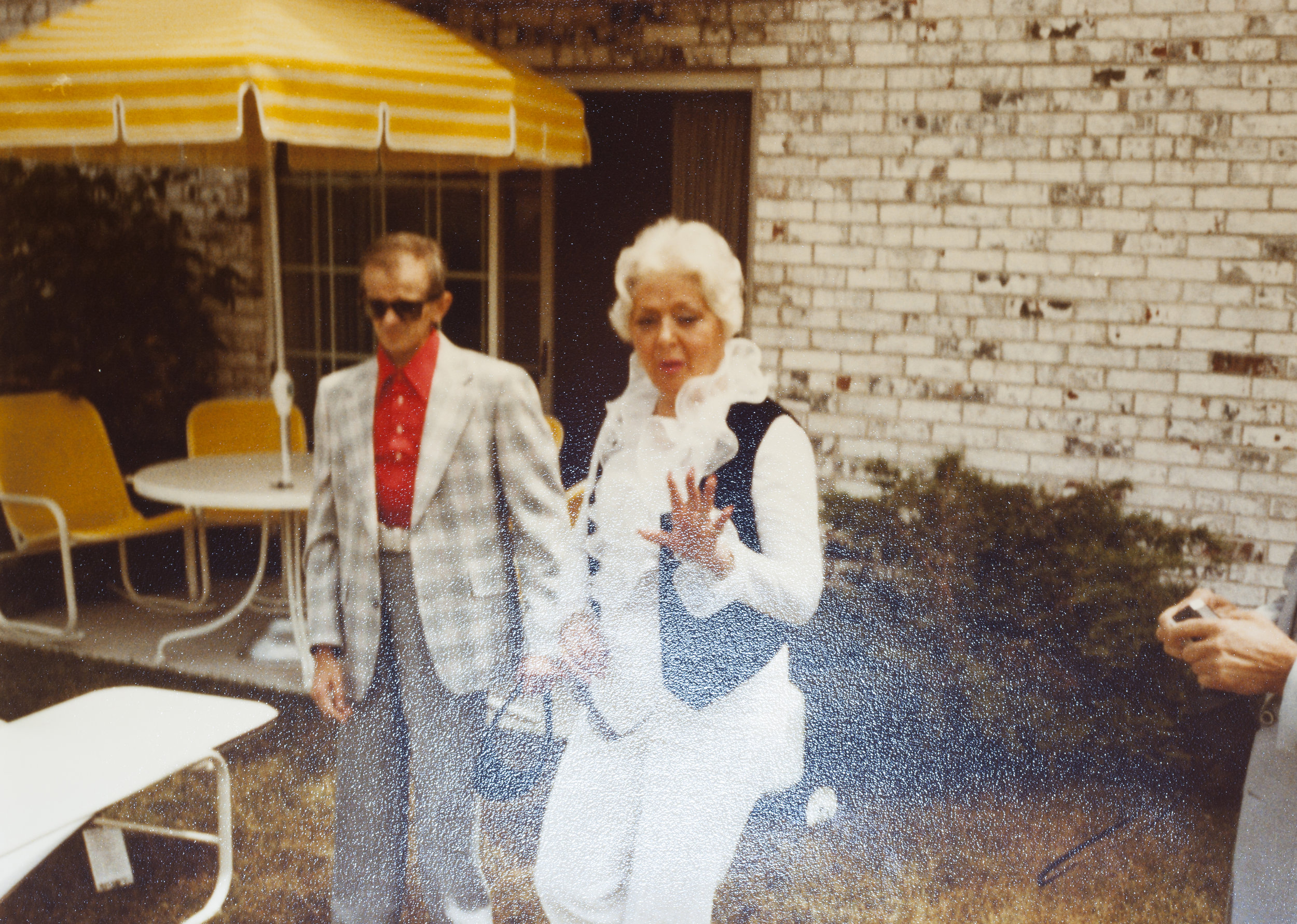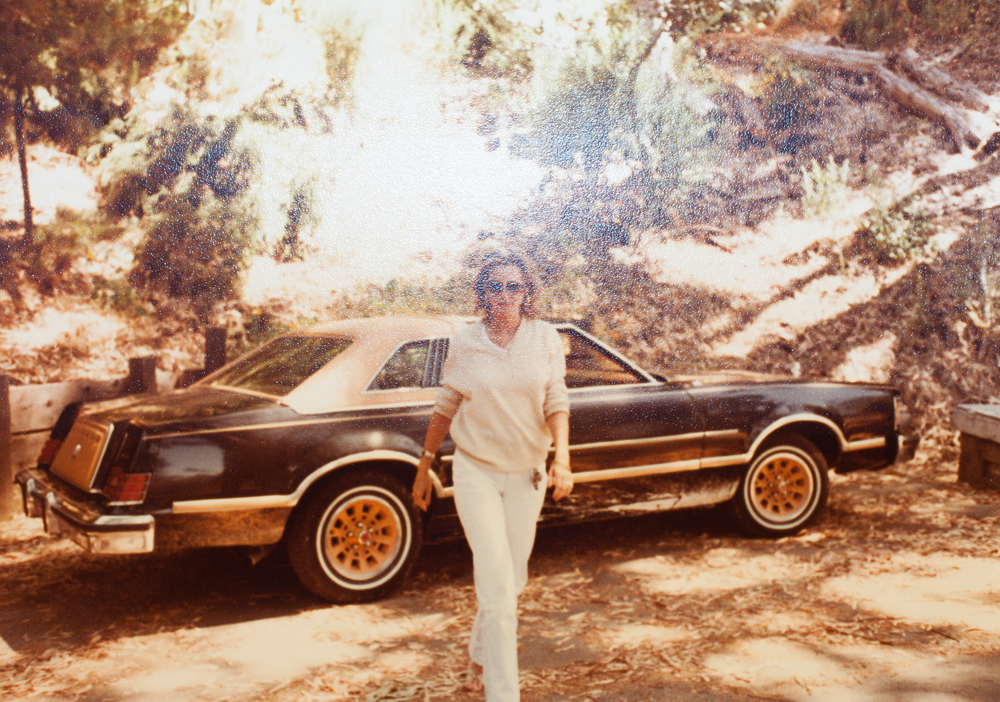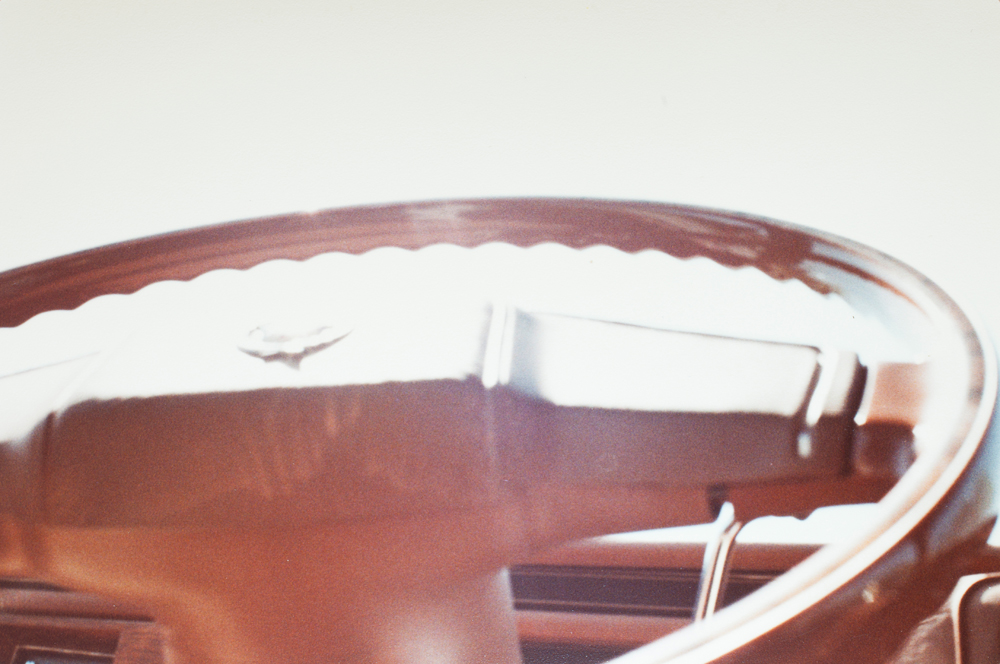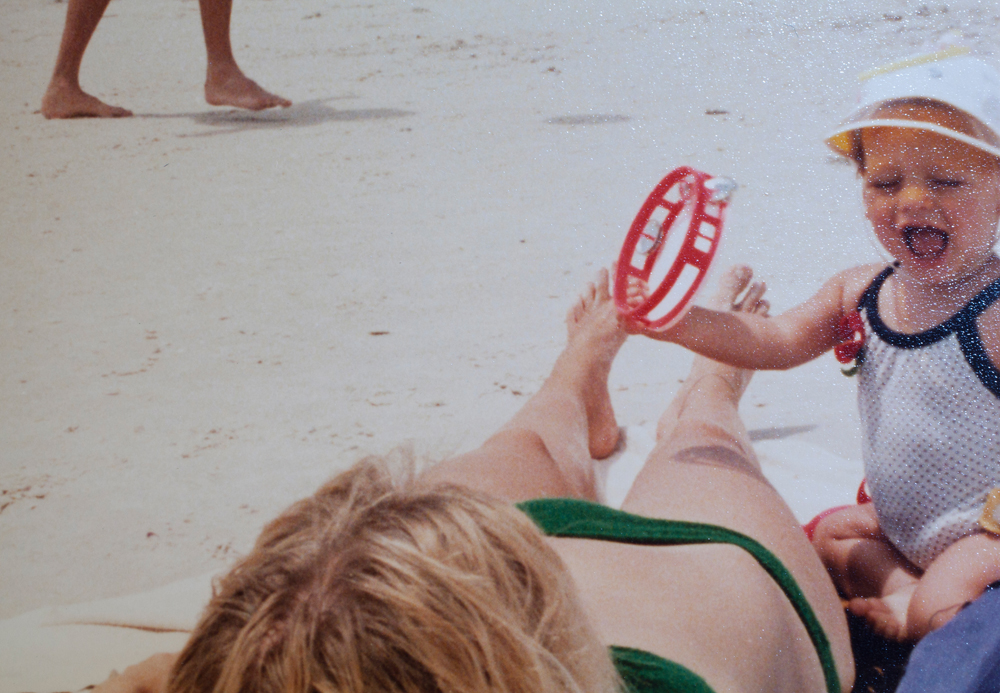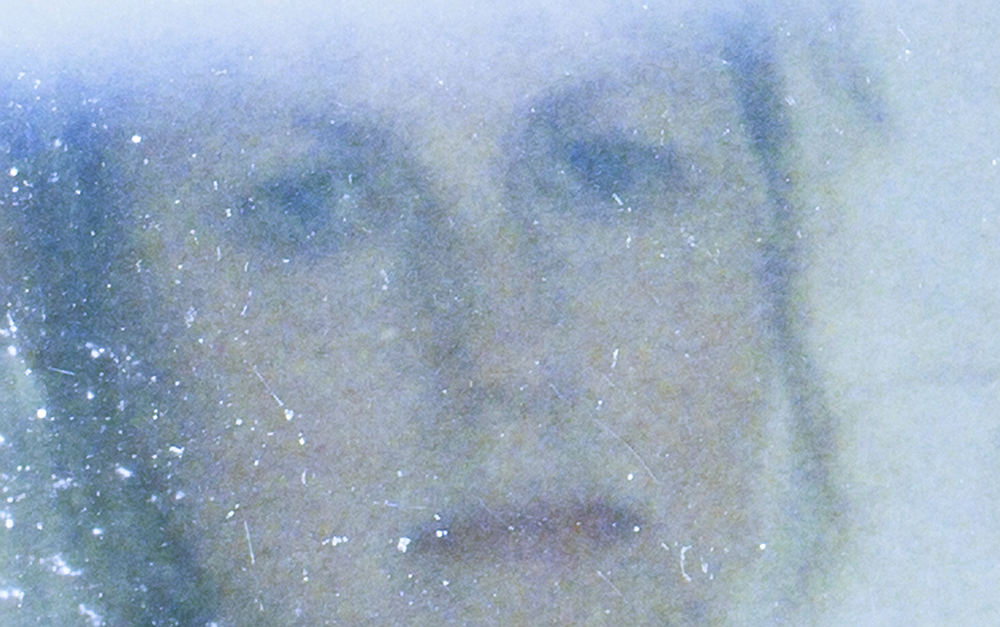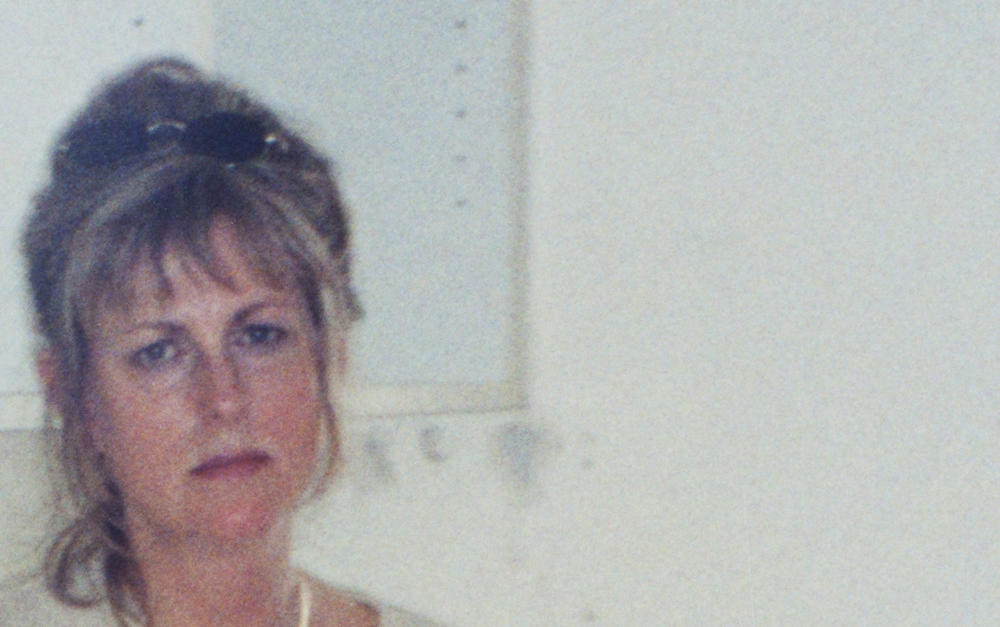MIMIC is both an exhibition and book project of re-photographed original photographic prints with flash, and manipulated originals. All images are taken from my family archive, spanning about 20 years and consisting of over 5,000 photographic prints. My father, who I rarely speak with today, took most, if not all of the images included in this project. The book includes an essay written by Dr. Corey Dzenko, and is currently on hold for publication, pending funding. A fulcrum of the project hinges on a piece titled Mimic (9206), seen below:
Mimic (9206), 17 original photographs, cutout and backed by mirror
detail of Mimic (9206)
The piece Mimic, (9206) was created in response to an essay written by Susan Buck-Morss in 1992, titled “Aesthetics and Anaesthetics: Walter Benjamin’s Artwork Essay Reconsidered*.” Buck-Morss claims that mimetic receptions, or innervations, are used as a deflection against the outside world. However, Walter Benjamin uses “innervation” as a term for mimetic reception of the external world that is empowering. [1] The example of a defensive reception Buck-Morss gives is the automatic smile that appears on a passersby that wards off contact, a reflex that “functions as a mimetic shock absorber.”[2]
By removing the faces, in direct gaze with my father, the photographer, we can no longer determine whether to interpret the subjects in the 17 images as a mimetic reception that is deflecting or empowering the photographer. The cutout or removal of the subjects is a formal means for the viewer to determine the relationship between the photographer and the subject in each photograph. The mirror on the other hand, places the viewer into the context of the image as if they themselves are one of the subjects. At the same time the mirror is a mimetic material choice. If the viewer imagines the mirror reflecting the perspective of the photographer within this panorama, then the camera takes on a position of power. I imagine the camera as the connection device between the photographer and subject. The use of the camera elicits the publication of the private to the public world, through the click of a shutter. The experience of this private family moment is being publicized, through the perspective of the photographer, my father.
[1] Susan Buck-Morss, Aestetic and Anesthetics: Walter Benjamin’s Artwork Essay Reconsidered, 17.
[2] Buck-Morss, 17.
[2016 Chapel Hill, North Carolina, USA]
